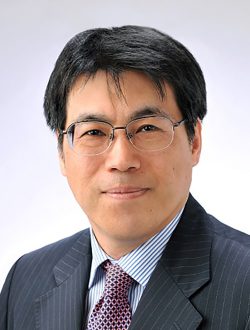Biography
Naoki Shinohara received the B.E. degree in electronic engineering, the M.E. and Ph.D (Eng.) degrees in electrical engineering from Kyoto University, Japan, in 1991, 1993 and 1996, respectively. He was a research associate in Kyoto University from 1996. From 2010, he has been a professor in Kyoto University. He has been engaged in research on Solar Power Station/Satellite and Microwave Power Transmission system. He is IEEE Fellow and URSI Fellow. He was IEEE MTT-S Distinguish Microwave Lecturer (2016-18), and is IEEE MTT-S AdCom member (2022-2027), IEEE MTT-S Technical Committee 25 (Wireless Power Transfer and Conversion) former chair and member, IEEE MTT-S MGA (Member Geographic Activities) Region 10 regional coordinator, IEEE WPT Initiative Member, IEEE Wireless Power Transfer Conference & Expo founder and Steering committee member, URSI commission D former chair, the first chair and technical committee member on IEICE Wireless Power Transfer, Japan Society of Electromagnetic Wave Energy Applications former president and adviser, Space Solar Power Systems Society president, Wireless Power Transfer Consortium for Practical Applications (WiPoT) chair, and Wireless Power Management Consortium (WPMc) chair. His books are “Wireless Power Transfer via Radiowaves” (ISTE Ltd. and John Wiley & Sons, Inc.), “Theory and Technology of Wireless Power Transfer: Inductive, Radio, Optical, and Supersonic Power Transfer” (CRC Press), and “Wireless Power Transfer: Theory, Technology, and Applications (2nd Edition)” (IET), and some English, Japanese, and Chinese text books of WPT.
Presentations
Recent Technology and Business of Wireless Power Transfer via Microwaves
Theory, technologies, applications, and current business of the wireless power transfer (WPT) via microwaves will be presented. The WPT via microwaves are roughly classified a wide beam WPT and a narrow beam WPT. A new radio regulation of the wide beam WPT via microwaves is enacted by Japanese government in May, 2022 and new WPT business started in Japan. Some startup companies have already produced commercial wide beam WPT systems in US with US radio regulation. For the future, there are a lot of interesting R&D for the narrow beam WPT with higher frequency and beam forming in the world. Useful theory and technology of the wide beam WPT and the narrow beam WPT for new WPT business and future WPT applications will be presented.
